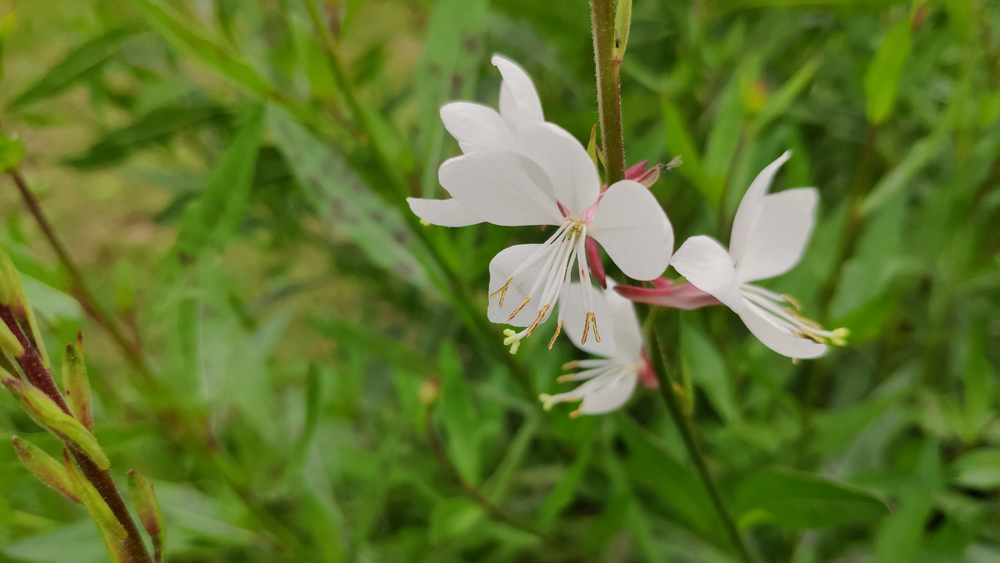Gaura, also known as apple blossom grass, Lindheimer’s bee blossom, wand flower, and whirling butterfly, is a beautiful, delicate addition to your flower gardens and containers. Learn more about how to plant, grow, and care for Gauras.
About Gaura
The name Gaura comes from the Greek word gauros, meaning “superb”—and indeed it is. A member of the evening primrose family (Onagraceae), gaura plants can range from 15 inches (dwarf) to 4 feet tall. Gaura’s small (1/2- to 1-inch-diameter), four-petal, pink, white, or bicolor flowers appear on wiry stems (aka “wands”) beginning in early summer and continue to do so if stems are cut back to allow for new growth, until the first hard frost. See your personalized frost dates.
The flowers attract bees and sometimes butterflies, and the plant is a host to the white-lined sphinx moth, a beneficial species. Gauras are tolerant of both drought and high temperatures. When they are planted in-ground, their long taproot goes deep for moisture; container plantings, though, need water—provided sparingly—for best flowering.
Gaura is an herbaceous, clump-forming perennial native to Texas, Louisiana, and Mexico. It is hardy in Zones 5 to 9, but in cold zones, it is often treated as or performs like an annual. The plant is also suitable for naturalizing in a mixed border or in wildflower or native plant gardens.
The plant is considered an easy-to-grow perennial, but it is not necessarily long-lived outside of its native areas, where cold temperatures and/or persistently wet soil can affect its survival. It is also suitable for naturalizing (in-ground) in a mixed border or in wildflower or native plant gardens. Check out more popular plants for naturalizing.











